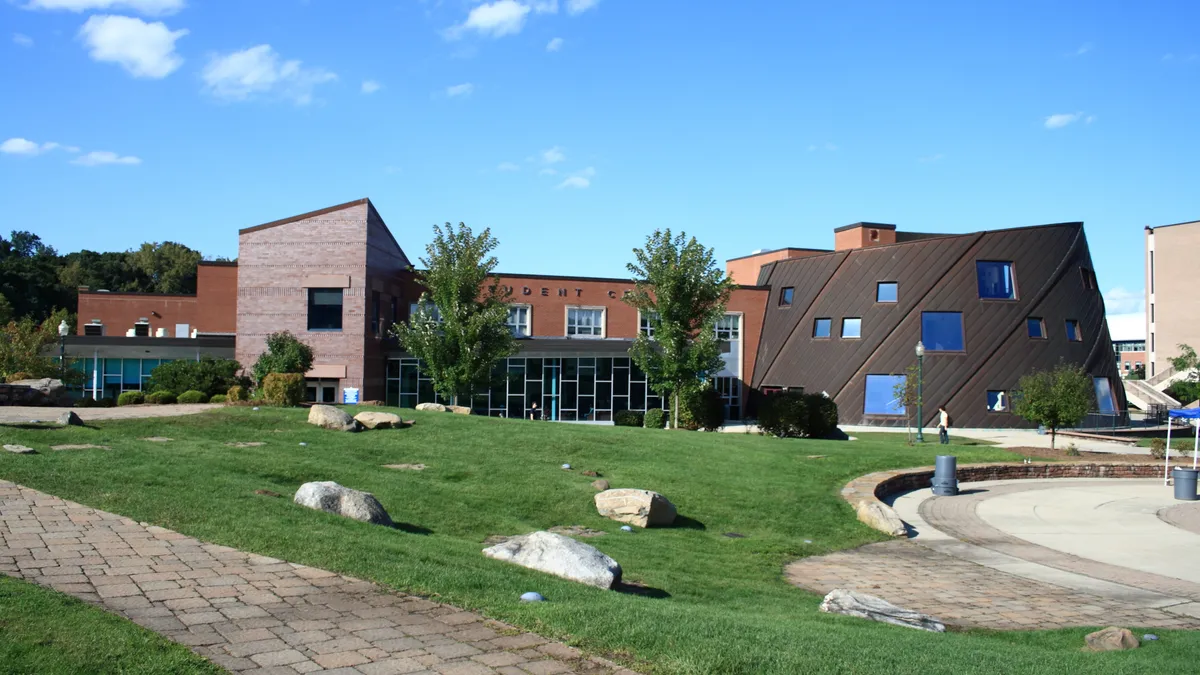Dive Brief:
- State funding for higher education increased 4.9% in 2022 when adjusted for inflation, rising for the 10th straight year, according to an annual report from State Higher Education Executive Officers Association.
- This also marks the first time since 2008 that per-student funding exceeded levels seen before the Great Recession, which ushered in massive state funding declines. In 2022, funding per full-time equivalent student reached $304, up 3.1% compared to 2008.
- The report’s authors chalk up the change to three trends — increased state funding for higher education, a sharp enrollment decline and generous COVID-19 relief funds. However, 28 states are still spending less on higher education than they did before the Great Recession.
Dive Insight:
Although SHEEO’s findings show state funding increases, they come with major caveats that could signal rough waters ahead. For one, part of the per-student funding increase is due to declining full-time equivalent enrollment, which is calculated based on student credits.
FTE enrollment fell to 10.3 million students in 2022, down 11.6% from its peak in 2011. That means public colleges have lost nearly all of the additional enrollment they gained in the wake of the Great Recession, according to the report.
Federal COVID-19 relief funds also buoyed funding. In 2022, this pot of funding amounted to about $2.5 billion, or around 2.1% of total state support for higher education. That translated to around $169 in funding per FTE at four-year colleges and $55 at two-year institutions.
However, the report warns that these one-time funds — which are running out — cannot replace state funding in the coming years.
The loss of these funds is already causing some public colleges to spar with state lawmakers.
The leader of Connecticut’s public colleges and universities recently warned that “devastating” state budget cuts would lead the system to hike tuition and implement mass layoffs.
However, state leaders contend they are actually raising base funding levels. One official told CT Mirror that the system’s request for more money appears “to be based on a belief that one-time federal funding to compensate for COVID-related costs should continue in perpetuity.”
The SHEEO report points out another concerning trend — students are still covering a larger share of their higher education costs than they have in the past. The percentage of higher education financed through net tuition revenue — which the report’s authors call the student share — has risen from 20.9% in 1980 to 41.7% in 2022.
Families have increasingly turned to federal aid to help pay for these costs. From 2008 to 2012, the share of public college students using federal Pell Grants rose from 23.3% to 37.9%. Meanwhile, the proportion using federal loans ticked up from 23.8% to 30.1%.
Still, the report points to reason for optimism. The student share has stabilized in recent years after reaching a high of 47.5% in 2013. In 2022, it declined 1.4 percentage points from the year before.
SHEEO officials say there is room for improvement.
“While we see per-student funding levels come back to pre-Great Recession levels, there is still a long way to go in helping students access and succeed in higher education,” SHEEO President Robert Anderson said in a statement. “The student share continues to draw concerns, and we hope these data help states see areas of improvement and continued opportunities of support for students.”











